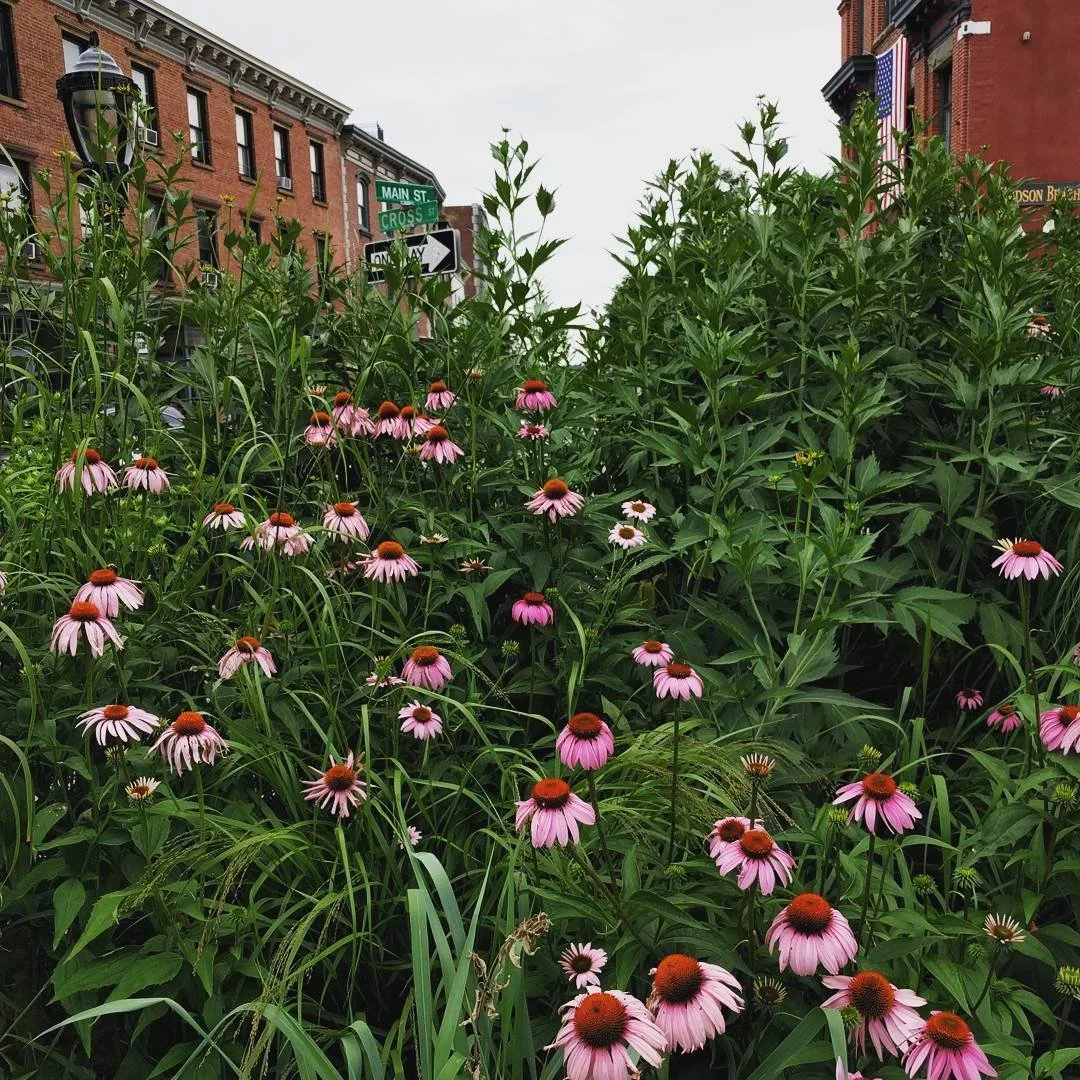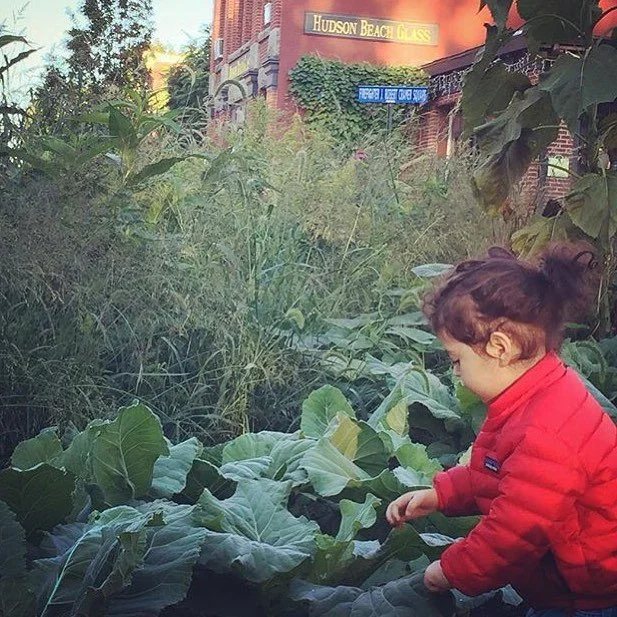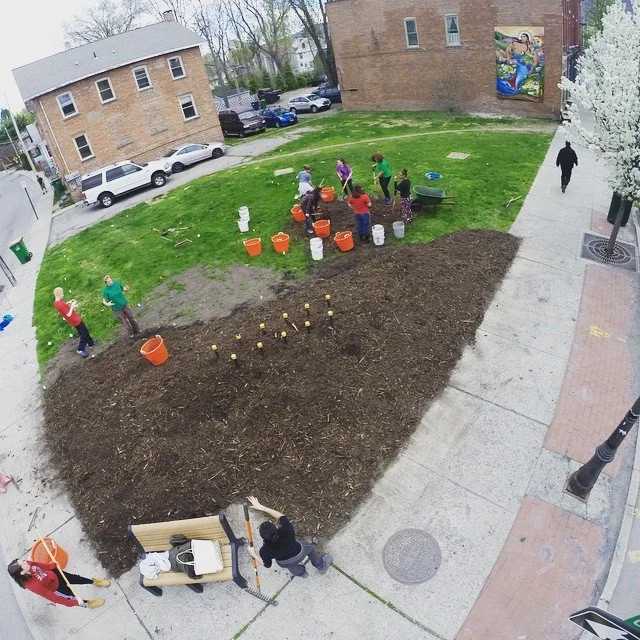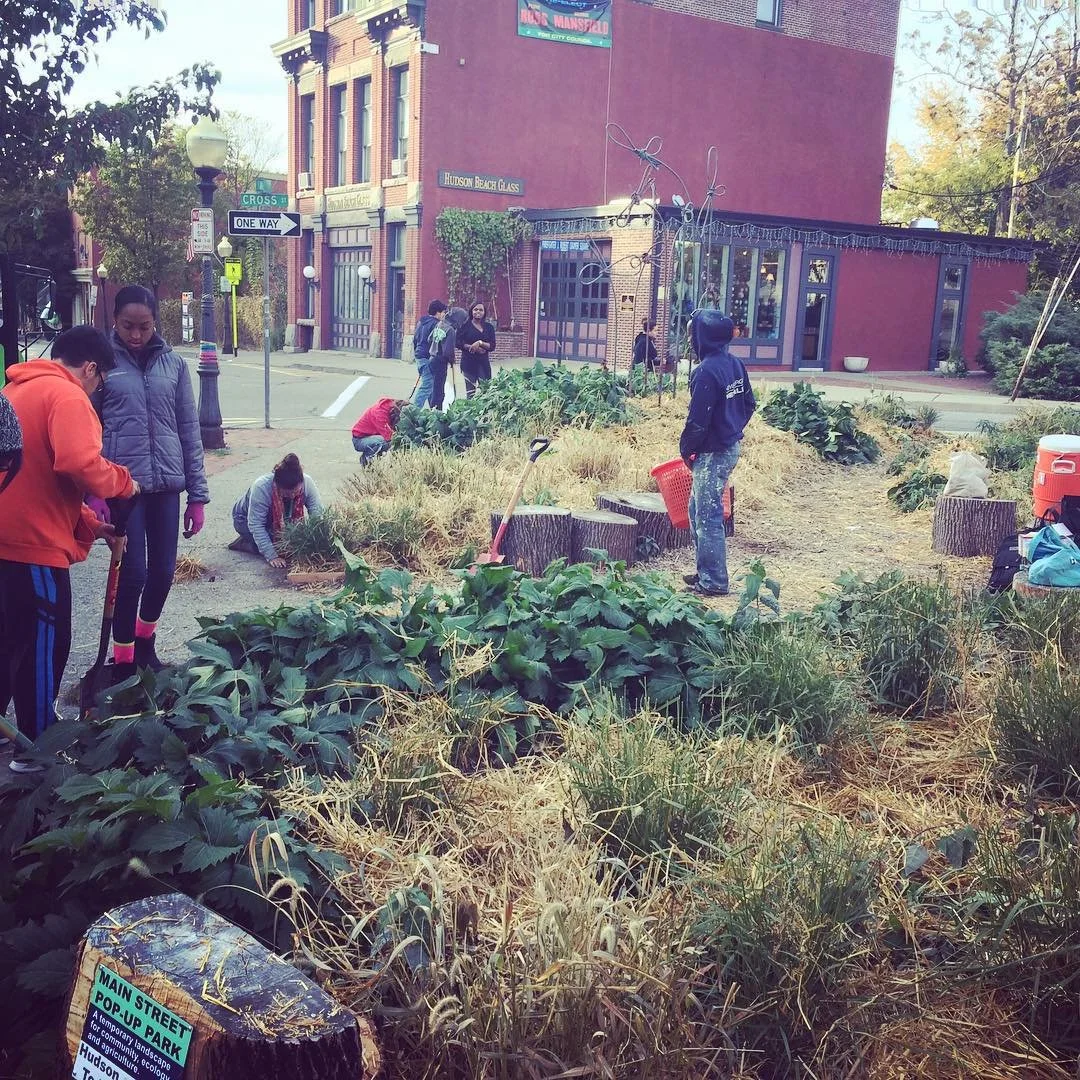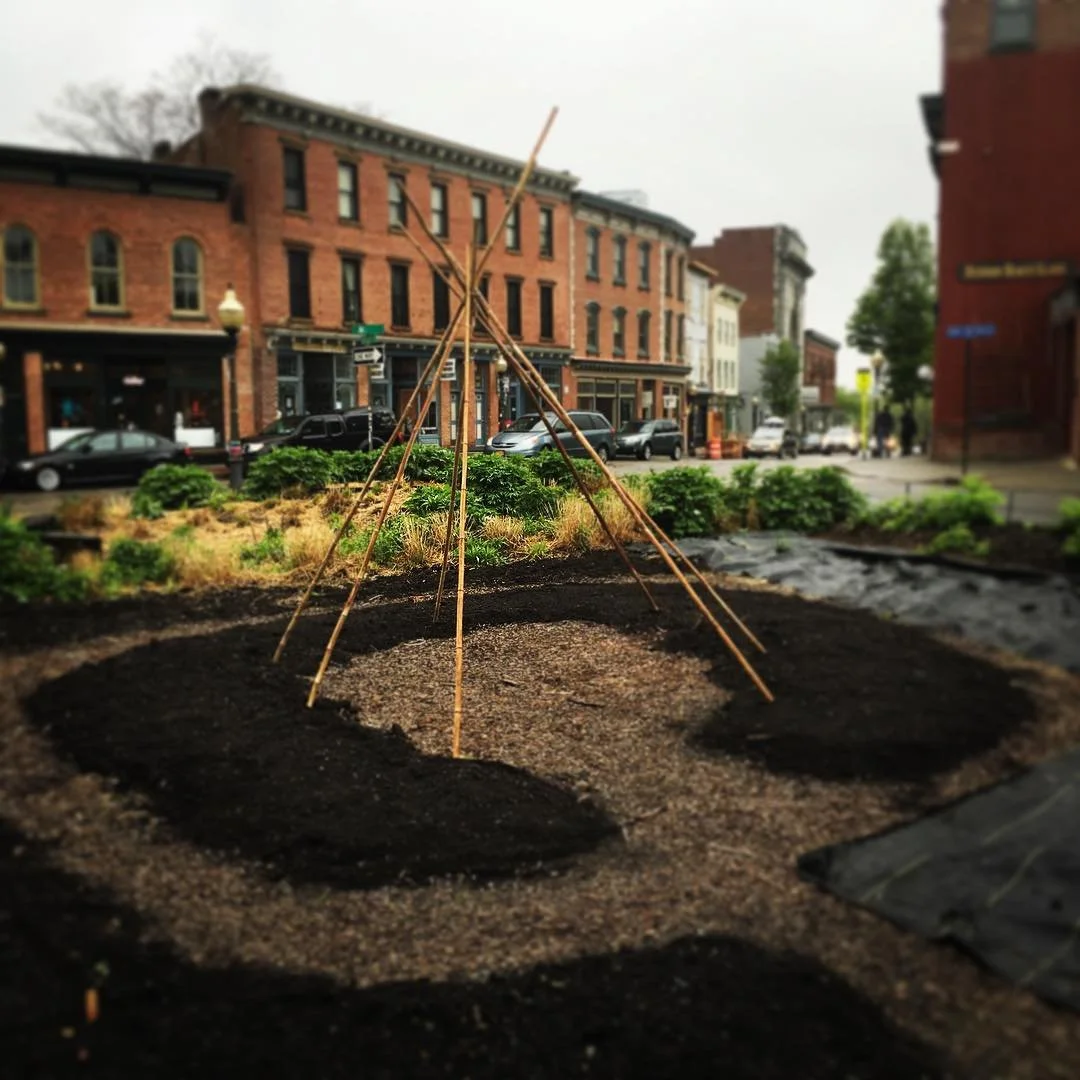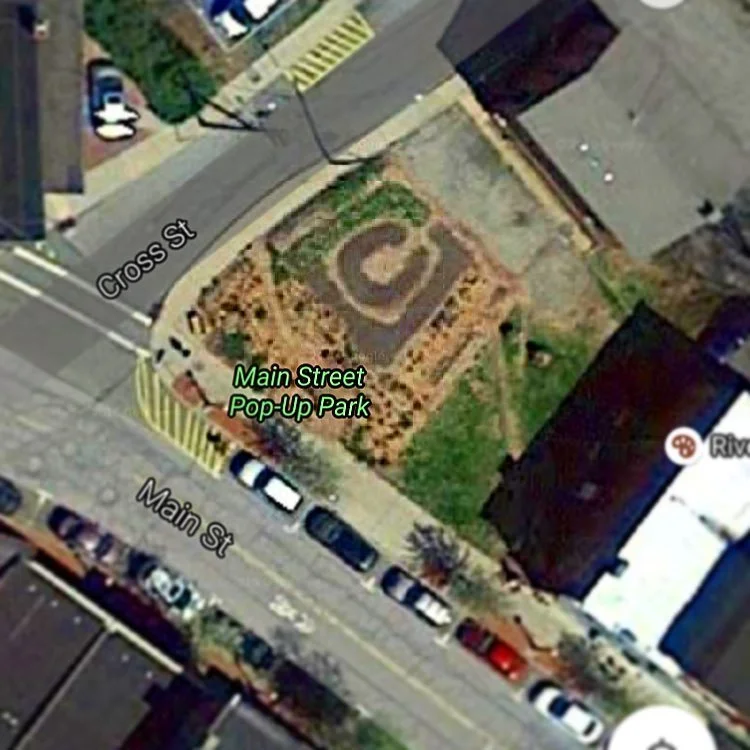Main Street Agroecological Pop Up Park
In 2014, One Nature collaborated with Green Teen volunteers and Hudson Todd Developers to transform a vacant lot in Beacon, NY, into a temporary pop-up park that revitalized the community. This forward-thinking project tackled a common global issue: real estate speculation often leaves land in urban areas unused for years, sometimes even decades. Instead of allowing this lot to remain idle, the team created a vibrant and productive space that would serve the community until future development took place.
Situated just steps from Beacon's Main Street, the park quickly became a hub for exploration and connection, offering opportunities to engage with agriculture, public art, and open green space. Residents were able to witness the transformation of a neglected and overlooked area into a thriving and lively landscape that brought people together and sparked inspiration.
Beacon's Main Street has very little green space, making this project particularly significant. The lot was one of the last remaining open, park-like areas in the city's linear center, a rare haven amid the bustling and rapidly developing small city. Small cities like Beacon often experience cycles of boom and bust, where periods of economic prosperity are followed by downturns that leave areas neglected or abandoned. In recent years, contemporary gentrification has brought revitalization to Beacon, but it has also had the unfortunate side effect of reducing abandoned lots that had become ecological habitat as development priorities shift toward commercial and residential projects. This park stood as a temporary but meaningful reminder of the importance of preserving open spaces within urban centers.
Central to this transformation was the involvement of the Green Teen Community Gardening Program. Established by Cornell Cooperative Extension Dutchess County in 2004, Green Teen empowers young people in Beacon through hands-on experiences in gardening, farming, and sustainable food systems. Participants in the program, ranging in age from 7 to 18, learn essential life and work skills while connecting with their community and the environment. From planting and harvesting to running farm stands and maintaining urban gardens, these youth gain firsthand experience in creating healthy, productive spaces. Their mission to foster ecological stewardship and community engagement aligned perfectly with the goals of the pop-up park. Green Teen volunteers played a pivotal role in planting the gardens, managing compost systems, and educating visitors about the importance of sustainable practices, making their contributions invaluable to the project’s success.
The park was thoughtfully designed to include a range of features that combined beauty and functionality. Comfortable seating areas, such as wooden benches and log seats, provided spaces for relaxation and gatherings. Planted berms and an existing mural added visual interest, while keyhole garden beds were filled with a variety of fruits and vegetables, offering a hands-on way for visitors to connect with sustainable gardening practices. A compost station was installed to encourage environmentally friendly habits, and the park was planted with wildflowers and grasses that displayed colorful blooms throughout the seasons. These plants, including sunflowers, goldenrod, and coneflowers, offered a dynamic example of how diverse plantings could enhance local gardens and create vibrant, thriving spaces.
The park became more than just a green space; it grew into a vital community resource. It hosted a local farmers market, attracted various birds and insects, and provided a welcoming environment where people could relax, gather, and connect. While the park was always intended to be a temporary solution, it demonstrated how even small, short-term landscapes can have a lasting impact. This pocket of greenery continued to enrich the heart of Beacon until 2024 when it was finally converted to a mixed use commercial development. For ten years, it had fostered a sense of community and connection while highlighting the potential of underutilized spaces to bring people and wildlife together in meaningful ways.



